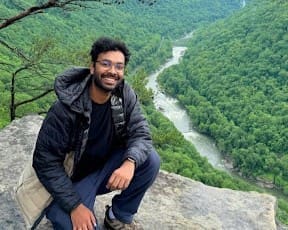From super-resolution smartphone cameras to vehicles that can anticipate human movement, computer vision is undergoing a transformation—and AI is at its core. As deep learning continues to mature, its applications in image enhancement and motion forecasting are no longer experimental—they’re essential infrastructure for everything from mobile devices to autonomous systems.
Whether it’s predicting how a pedestrian will move in the next few seconds or intelligently reconstructing image details lost to low resolution, the new wave of innovation is powered by highly specialized neural architectures that combine domain knowledge with scale. At the forefront of this evolution is Sri Nitchith Akula, a software engineer at Zoox, and a senior IEEE member, whose work spans both autonomous driving and next-gen consumer imaging. With engineering roles at Zoox and Samsung, and a portfolio that includes seven U.S. patents, Akula is helping shape how machines see, interpret, and react to the world.
From Pixels to Prediction: Bridging Devices and Decisions
One of the biggest challenges in computer vision is context. It’s not enough for machines to recognize objects—they must understand movement, lighting, environment, and intent. That’s especially true in the realm of autonomous vehicles, where milliseconds matter. At Zoox, Akula contributed to the development and productionization of prediction models—systems that enable a self-driving vehicle to anticipate the motion of surrounding agents, such as pedestrians, cyclists, or other cars.
“Prediction models are where perception meets decision-making,” Akula explains. “It’s not just about identifying where something is now, but where it’s going and how confidently we can act on that.”
His work in motion forecasting sits at the intersection of deep learning, safety, and real-time scaling—a combination that has allowed Zoox to advance toward safer, more responsive autonomous systems.
Reinventing Vision on Consumer Devices
Before his contributions to autonomy, Akula focused on a different kind of visual intelligence: AI-based image enhancement and ultra-high-resolution video compression for Samsung’s flagship devices. His research helped bridge two traditionally separate approaches in computer vision—pixel-based and frequency-based feature extraction.
His U.S. patent, Method and Electronic Device for Performing AI-Based Zoom of Image, highlights a joint neural network architecture that combines pixel-domain and frequency-domain feature maps to reconstruct high-resolution images from lower-quality inputs. This method enables more natural, detailed zoom capabilities—especially important in mobile photography and 8K video playback.
Another notable contribution is his involvement in the patent titled, “Description of SDR, HDR and 360 video coding technology proposal considering mobile application scenario by Samsung, Huawei, GoPro, and HiSilicon”, which helped evaluate SDR, HDR, and 360-degree video formats, focusing on encoding efficiencies crucial for delivering immersive visual experiences on mobile hardware.
Engineering for Scale and Generalization
A recurring theme in Akula’s work is scalability—designing models that retain performance while expanding in complexity or deployment scope. Whether training autonomous systems to generalize across urban scenarios or optimizing neural networks for edge deployment on consumer devices, Akula has focused on pushing the boundaries of deep learning efficiency and adaptability.
With years of hands-on experience and a strong research foundation, he is part of a growing community of engineers who not only build AI models but shape how they integrate into real-world systems—safely, intelligently, and at scale.
Smarter Vision, Broader Impact
As vision-based AI systems continue to evolve, engineers like Sri Nitchith Akula are proving that deep learning isn’t just improving how machines see—it’s expanding what they can do. From self-driving mobility to AI cameras in our pockets, the future of computer vision lies in scalable intelligence, built for both performance and impact.
“In computer vision, detail matters—but so does the ability to generalize,” Akula says. “The real challenge is building systems that are precise, fast, and ready for the complexity of the real world.”

